Is There a Future for the Sinkhole-Studded Dead Sea?
Receding waters are leaving behind an environmental disaster, and a new kind of tourism.
Ofer Shmuelfeld pulls his kayak up on the shore of a small inlet. Others in the group he is leading pull up next to him and take a look around. In the mud of a small, shallow basin, transparent, glass-like cubes sparkle in the sun. The air is filled with a strong smell of sulfur and a blessed silence.
The cubes are sodium chloride—table salt—while the mud is all seaweed and the rotten, compressed remains of hundreds of years of organic material. The brittle walls of the inlet are actually a the sides of a sinkhole, one wall collaped to connect it to the Dead Sea. The walls, at crooked angles, are composed of alternating lines of chalky white sediment and gray-brown mud. Shmuelfeld calls them “Biscuit Cheesecake,” an Israeli treat that sandwiches sweet cream between layers of cookies.
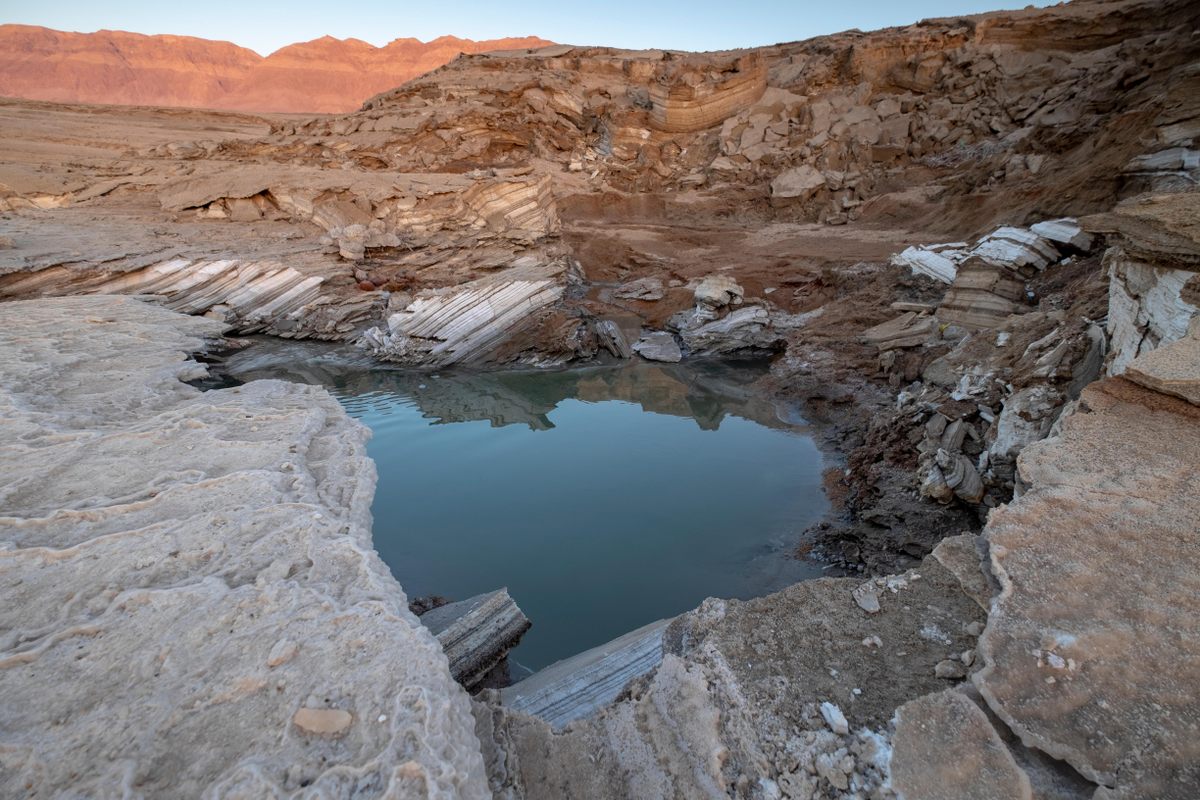
This otherworldly, magnificent sinkhole can be reached only by water, with a kayak or boat, since the ground around it is not safe to walk on. In the sky, gliders are circling, their passengers taking pictures of this sinkhole and others from above. In recent years, they have become an attraction—a place for photography workshops and romantic picnics. It is a new age of tourism here on the Dead Sea, one that recognizes the beauty in a symptom of an ecological disaster.

Over the last decade, the northern Dead Sea coast, nicknamed “Sinkhole Country,” has undergone an economic collapse. Vast swaths of land were deemed unstable and access to them was blocked. Farms, beaches, and parking lots collapsed into sinkholes and were abandoned, along with businesses worth hundreds of millions of shekels. A few years ago, the problem arrived at the doorstep of Kibbutz Ein Gedi, which may end up as the first community in the country to fall into a sinkhole.
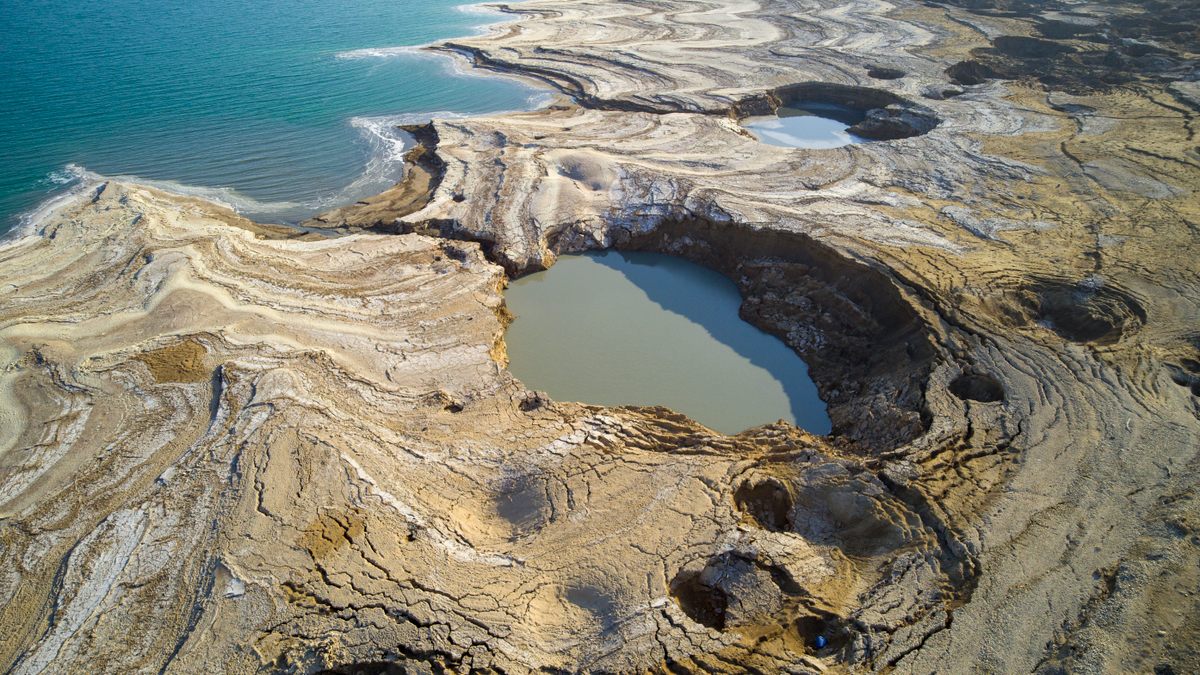
Israel and Jordan make extensive use of the water flowing into the Dead Sea, and its entire southern basin is now the Dead Sea Works plant, a series of massive evaporation ponds that produce potash for fertilizer and other uses. As a result, the water level in the Dead Sea currently drops at a rate of more than three feet a year. As the water table recedes from the coast, it exposes a deep, old layer of rock salt—some 15 to 200 feet below the surface—to flowing rainwater that’s not already saturated with salt. As that layer dissolves, the surface becomes unstable until collapse is inevitable. According to geologist Eli Raz, the Dead Sea region already has roughly 7,000 sinkholes, and that number is expected to double in the next few years.
The inhabitants and scientists in the region are developing various initiatives to turn this ecological catastrophe into a powerful tourist attraction. Kayak tours among the sinkholes are among the most popular. Shmuelfeld, a kayaker for the past 25 years, is one of the pioneers of this emerging form of tourism. He started taking people out six years ago, with his partner Jacky Ben-Zaken. “In the beginning we would go on a kayak trip two or three times a month,” he says. “Today we do it twice a day.” Shmuelfeld used to be a chief of construction for television studios. “A set is a non-variable figure,” he adds. “Here, in the Dead Sea, the setting keeps changing all the time. Constantly under construction.”

Professor Nadav Lensky, director of the Dead Sea Observatory, thinks that efforts like Shmuelfeld’s can be gently interwoven into the fabric of “Sinkhole Country.” “It is very fashionable to address what is being done in the Dead Sea as a catastrophe, but the story is more complicated than that,” he says. “We can assume that in the next 20 years the Dead Sea will decline another 20 meters [around 60 feet] below the present level, and in the next centuries the system will stabilize at up to 100 meters [around 300 feet] below present level. Within the coming decades, whether we shut down the potash industries or not, and whether we stream water to the sea or not, we will see more or less the same development, which we have to learn to live with. We have two options: Call the place a disaster area, put signs and build fences, or declare the place an area of exceptional geological phenomena, and a safety net can be built in order to live with them.”
Lensky and his colleagues have recently published a report, The Dead Sea shores: From a liability to an asset. “Although the sinkholes are attractive geomorphic features, sinkhole hazards prevent the development of tourism, cause damage to infrastructures and damage the agriculture in the region,” it says. “Consequently, the Israeli authorities refer to the region between Road 90 and the lake coastline as dangerous and the road signs indicate ‘no entrance.’ Here we present a more vital and safe approach that will allow the public to hike, explore and enjoy these dynamic landscapes for fun, tourism, education and for research.” The report recommends marking safe trails from distant parking areas, and monitoring those trails with an early warning system for sinkhole hazards.

On the way back to the kayaks, Shmuelfeld’s group encounters lacy sheets of salt, salt formations and crystals, mud chunks, and mud cakes. In these wet sinkholes, the water is darkened by mud and sediment, unlike the crystal-clear water of the sea itself. “We should have called them ‘sinking pools,’ not ‘sinkholes,’” says Shmuelfeld. “A sinkhole makes you think of the ground opening up and swallowing you into a dark hole. A sinking pool sinks gradually, in a way that allows us to monitor its sinking rate, know where the ground is safe—and travel.”
The Dead Sea has lost a third of its surface area and more than 100 feet of depth since the 1960s. The people who love its beauty, history, and mystery, are planning to pull it back up, one way or another.
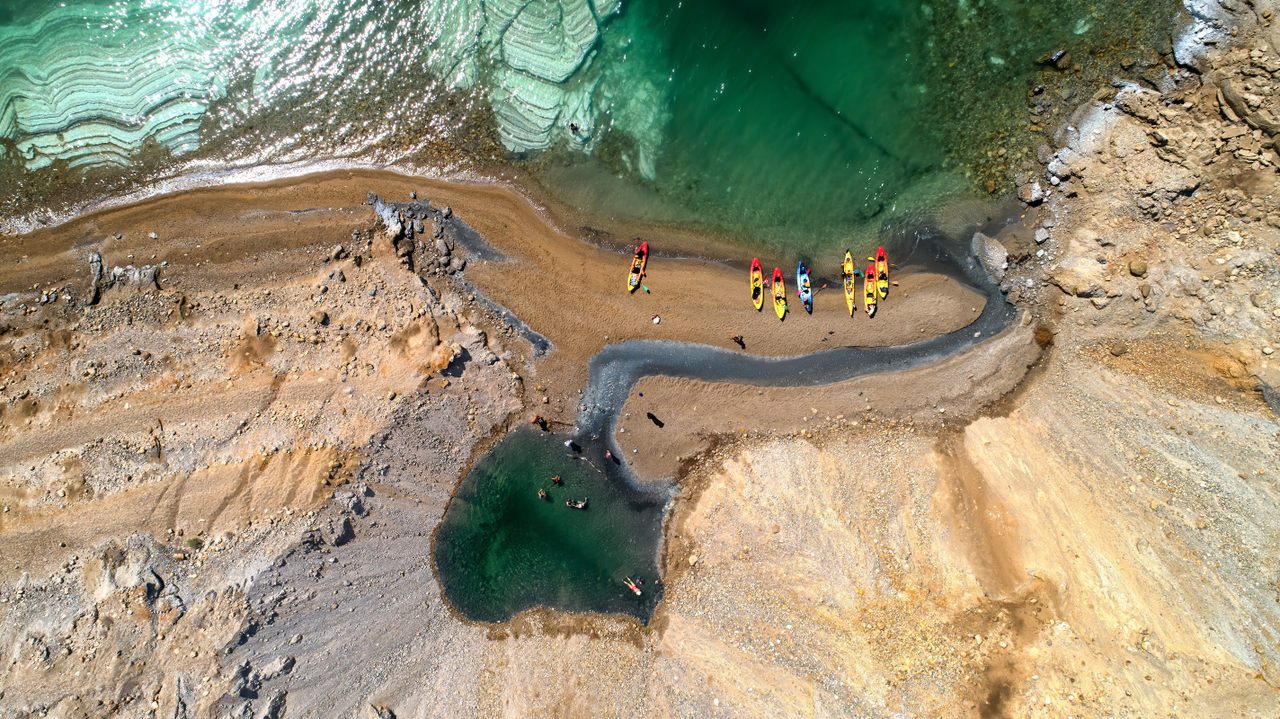




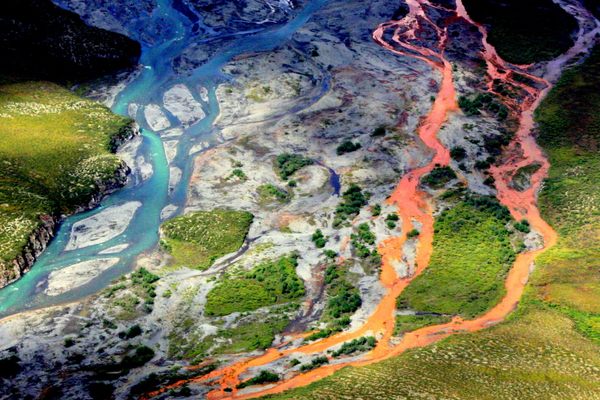
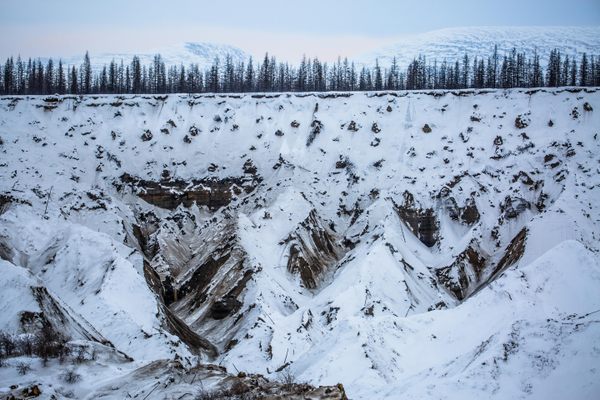
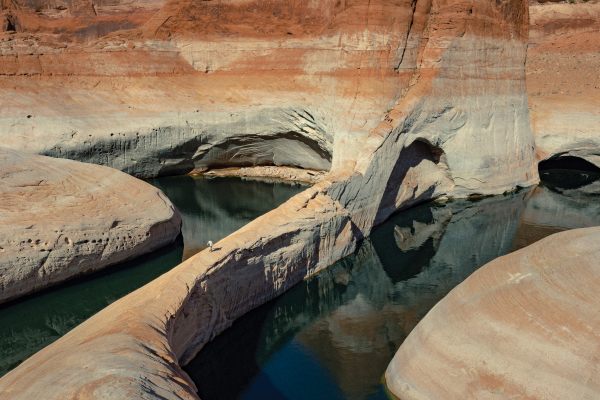







Follow us on Twitter to get the latest on the world's hidden wonders.
Like us on Facebook to get the latest on the world's hidden wonders.
Follow us on Twitter Like us on Facebook